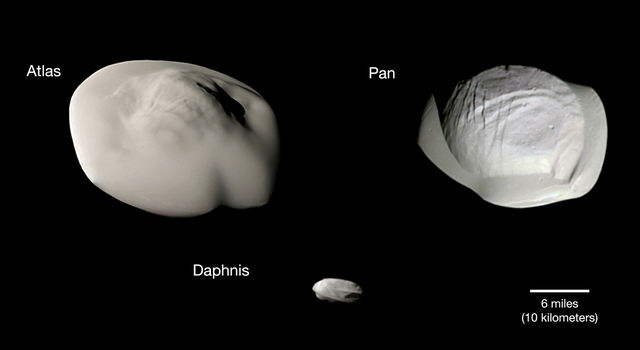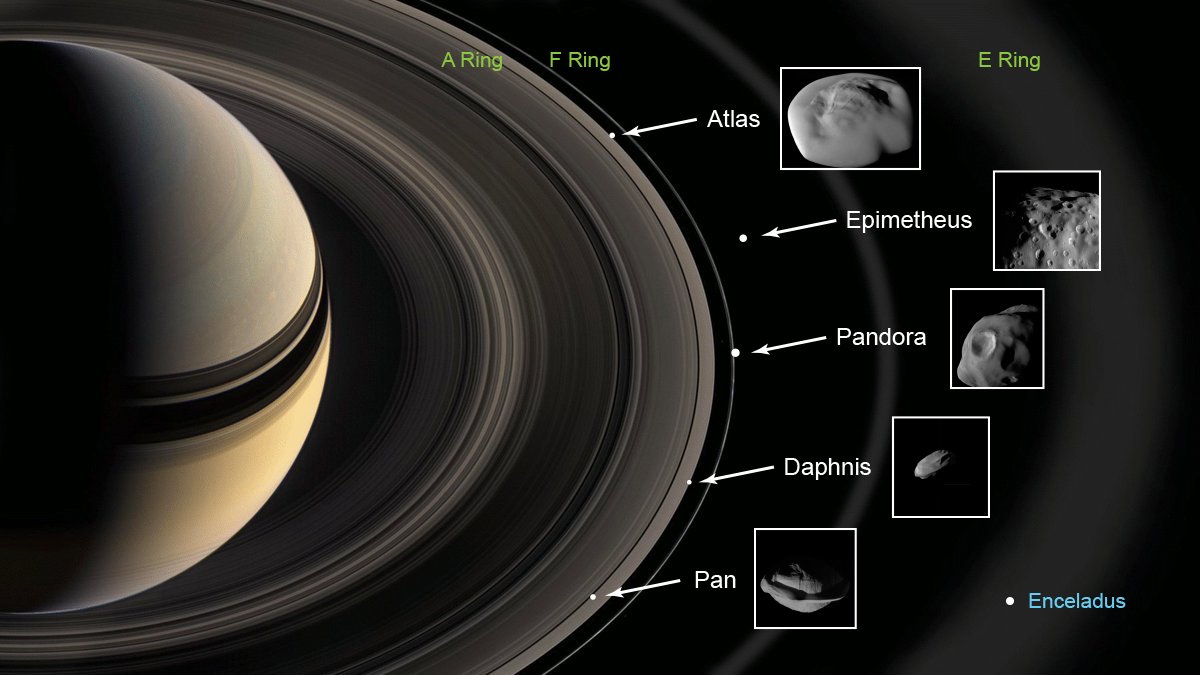
New findings have revealed that five tiny moons snuggled in and near Saturn’s rings. The closest-ever flybys by NASA’s Cassini spacecraft disclose that the surfaces of these unusual moons are covered with material from the planet’s rings and from the icy particles emrging out of Saturn’s larger moon Enceladus. This research succesfully draws a picture of the competing processes shaping these tiny-moons.
The daring, close flybys of these odd little moons let us find how they interact with Saturn’s rings,” said Bonnie Buratti of NASA’s Jet Propulsion Laboratory in Pasadena, California, who led a team of 35 co-authors that published their work in the journal Science on March 28. One of a Pakistani Planetory scientists Dr. Nozair Khawaja was among these co-authors.
The new research carried out from data gathered by six of Cassini’s instruments before its mission ended in 2017, is a strong vindiction that dust and ice from the rings accretes onto the moons embedded within and near the rings.
Scientists also found that the moon surfaces are highly porous, further verified that they were formed in multiple stages as ring material settled onto denser cores that might be remnants of a larger object that broke apart. The porosity also helps explain their shape: Rather than being spherical, they are blobby and ravioli-like, with material stuck around their equators.

The process may be going on throughout the rings, and the largest ring particles are also accreting ring material around them. Detailed analysis of these tiny ring moons may further provide us more about the charactrastics of the ring particles themselves.
Of the satellites studied, the surfaces of those closest to Saturn — Daphnis and Pan — are the most altered by ring materials. The surfaces of the moons Atlas, Prometheus and Pandora, farther out from Saturn, have ring material as well — but they’re also coated with the bright icy particles and water vapor from the plume spraying out of Enceladus. (A broad outer ring of Saturn, known as the E ring, is formed by the icy material that fans out from Enceladus’ plume.)
Scientist got the main data set from Cassini’s Visible and Infrared Mapping Spectrometer (VIMS), which gathered light visible to the human eye and also infrared light of longer wavelengths. It was the first time Cassini was close enough to create a spectral map of the surface of the innermost moon Pan. By analyzing the spectra, VIMS was able to learn about the composition of materials on all five moons.
VIMS observed that the ring moons closest to Saturn look the reddest, similar to the color of the main rings. Though Scientists are not fully aware with the exact composition of the material that appears red, but they hold on it is likely a mixture of organics and iron. The moons just outside the main rings, on the other hand, appear more blue, similar to the light from Enceladus’ icy plumes.
The six uber-close flybys of the ring moons, completed between December 2016 and April 2017, involved all of Cassini’s optical remote sensing instruments that study the electromagnetic spectrum. They worked alongside the instruments that examined the dust, plasma and magnetic fields and how those elements interact with the moons.
Resaerchers are craving to come across that what triggered the moons to form? For finding a reasoable answwr scientists will use the new data to model scenarios and could apply the insights to small moons around other planets and possibly even to asteroids.


